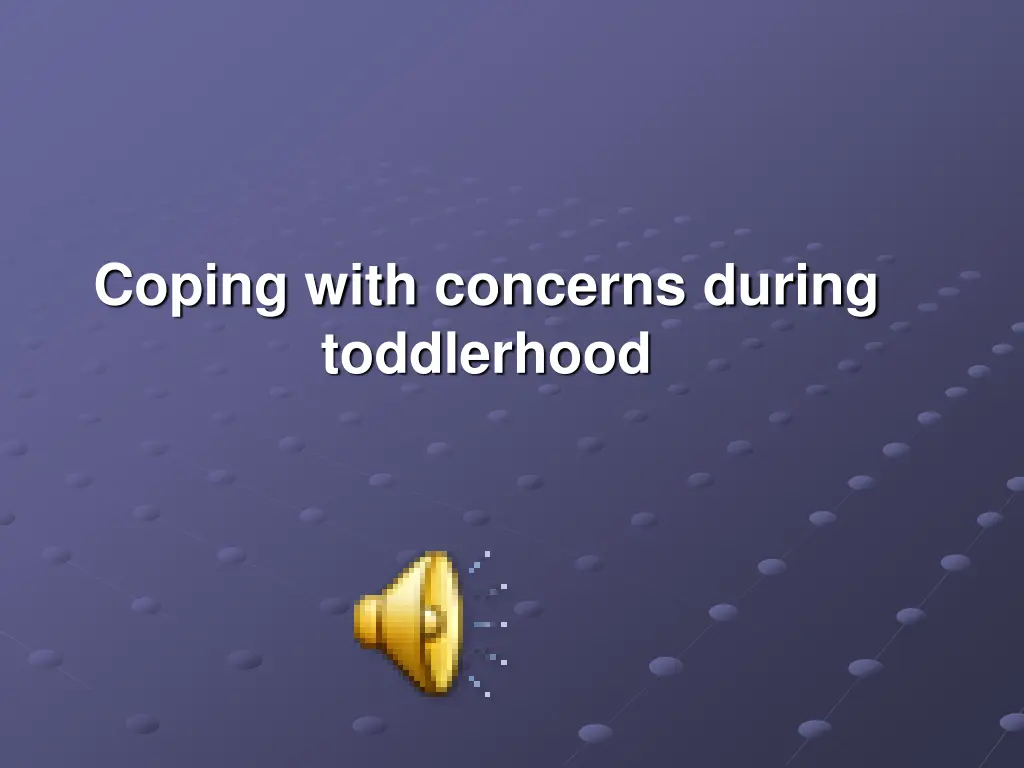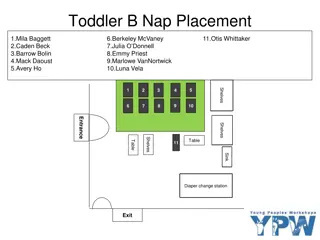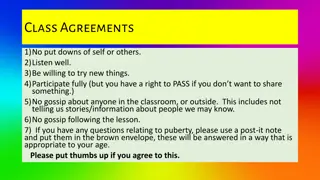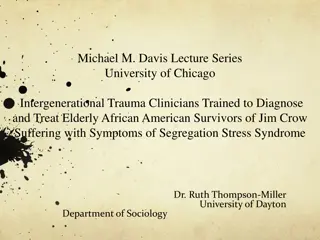
Coping with Concerns During Toddlerhood: Toilet Training and Helpful Techniques
Learn about toilet training essentials for toddlers, including anticipatory guidance, nighttime dryness, helpful techniques for initiation, parental involvement, mastering steps of toileting, and the role of day care providers in supporting parents. Assessing readiness factors is crucial for a successful toilet training experience.
Download Presentation

Please find below an Image/Link to download the presentation.
The content on the website is provided AS IS for your information and personal use only. It may not be sold, licensed, or shared on other websites without obtaining consent from the author. If you encounter any issues during the download, it is possible that the publisher has removed the file from their server.
You are allowed to download the files provided on this website for personal or commercial use, subject to the condition that they are used lawfully. All files are the property of their respective owners.
The content on the website is provided AS IS for your information and personal use only. It may not be sold, licensed, or shared on other websites without obtaining consent from the author.
E N D
Presentation Transcript
Coping with concerns during toddlerhood
1. Toilet training Anticipatory guidance for families about toilet training should begin prior to the child's developmental readiness to toilet train. Psycho physiologic factors are required for readiness There is not a universal right age to begin toilet training or an absolute deadline to complete training. Nighttime bladder control normally takes several months to years after daytime training begins, sleep cycle needs to mature.
Children who do not have nighttime dryness by the age of 6 years require intervention Bowel training is usually accomplished before bladder training R/to greater regularity and predictability There is a stronger sensation for defecation rather than for urination
Helpful techniques when initiating training The Selection of a potty chair or use the toilet, or a portable seat attached to the regular toilet. Practice sessions should be limited to 5 or 10 minutes. Dressing children in easily removed clothes
o A parent should stay with the child o Encouraging imitation by watching others is helpful o Frequent reminders and trips to the toilet are necessary for children who engrossed in play activities
o As the child masters each step of toileting (undressing, going, wiping, dressing , flushing, and hand-washing) he or she gains a sense of accomplishment that should be reinforced by parents o Regression is a normal part of toilet training and does not mean failure
Day care providers also play a role in the support and education of parents regarding toilet training practices Enhance consistency in care of toddler is important
Assessing toilet training readiness Physical readiness o Voluntary control of the anal and urethral sphincters is achieved sometime after the child is walking (between 18 and 24 months). o Ability to stay dry for 2 hours; decreased number of wet diapers; waking dry from nap o Regular bowel movements o Gross motor skills of sitting, walking are developed o Fine motor skills to remove clothing
Mental readiness: o Recognizing urge to defecate or urinate o Verbal or nonverbal communicative skills to indicate when wet or has urge to defecate or urinate o Cognitive skills to imitate appropriate behavior and follow directions
Psychologic readiness: o Expresses willingness to please parent o Able to sit on toilet for 5 to 10 minutes without fussing or getting off o Interest about adult's or older sibling's toilet habits o Impatience with soiled or wet diapers; desire to be changed immediately
Parental readiness: o Recognizes child's level of readiness o Willing to invest the time required for toilet training o Absence of family stress or change , such as a divorce, moving , new sibling, or imminent vacation
2. Sibling rivalry Sibling rivalry: is the natural jealousy and resentment of children toward a new child in the family, when a parent turns his or her attention from the toddler and interact with a new baby. Preparation of children for the birth of a sibling is quite individual, but age dictates some important considerations: o A good time to start talking about the baby is when toddlers become aware of the pregnancy Toddlers need to have realistic ideas o o Telling them that a new playmate will come home soon sets up unrealistic expectations.
Preparation of children for the birth of a sibling 1. Parents should emphasize which routines will stay the same, such as reading-stories. 2. Introducing them to contact with infants, Providing a doll on which toddlers can imitate parental behaviors. 3. A new sibling in the home is stressful, so any additional stresses for the toddler should be avoided or minimized.
4. Pregnancy is an abstraction for toddler, so seeing simple pictures of the uterus and fetus and feeling the fetus move help the child feel involved the experience. 5. Parents can alert visitors to the toddler's needs, having small presents on hand for the toddler, and including the child in the visit as much as possible. 6. The toddler can also help with the care of the newborn by getting diapers and doing other small tasks.
How children exhibit jealousy Some will overtly hit the infant Push the child off the mother's lap Pull the bottle or breast from the infant's mouth More often the hostility id subtle and covert Toddlers may verbally express a wish that the infant go back inside mommy
They will revert to more infantile forms of behavior as demanding a bottle, using baby talk Aggressively acting out toward others For this reason, infant must be protected by parental supervision of the interaction between the siblings






















